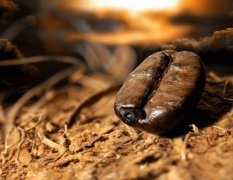Boutique coffee beans common sense Elephant bean coffee beans

Although all kinds of raw coffee from all over the world have their own taste, they are almost the same size, whether they are Robbins or Arabica beans. However, giant coffee beans (Elephant bean) are an exception, which is three times or more larger than other coffee beans. The taxonomic name of this giant coffee bean is Maragogype, which comes from Malagoripi County in the state of Bahia, Brazil. The taxonomic status of giant coffee beans was established for the first time in the county in 1870. It is a hybrid variety of Arabica coffee. After the taxonomic status was determined and separated from other populations, giant coffee beans were cultivated rapidly and brought better economic benefits. This kind of coffee was grown in the English town of Kew in 1883 and is said to be growing well. France was the early market for the coffee beans, while in pre-World War I Germany, giant coffee beans were the only coffee consumed by the royal family.
Although only Guatemala (Guatemala), Mexico (Mexico), Nicaragua (Nicaragua), Honduras (Honduras), El Salvador (El Salvador), Brazil (Brazil) and Zaire (Zaire) now produce Marago Rippe coffee, it used to be grown in coffee-producing areas around the world. The best giant coffee beans grow only in Mexico and Guatemala, while high-quality Zaire coffee is increasingly rare. In fact, global coffee production has fallen from its peak in the first two decades of this century.
In terms of taste, many people find it admirable to have a cup of coffee made with Mexican or Guatemalan coffee powder. Moderate taste, no bitterness, slightly sour, if you add a little fruit spice, the taste will be better, and it tastes smooth and smooth.
Important Notice :
前街咖啡 FrontStreet Coffee has moved to new addredd:
FrontStreet Coffee Address: 315,Donghua East Road,GuangZhou
Tel:020 38364473
- Prev

Fine Coffee beans Coffee Culture of Santos, Brazil
Brazil is located in South America, about 15 degrees south latitude. Brazilian coffee culture began in 1727 and sprang up in the north of Brazil when a Mr. Francesco de MeloPalheta smuggled coffee seeds from France to Brazil. At that time, this was strongly opposed by the French who monopolize the coffee business today. Those seeds are the ancestors of more than 300 million Brazilian coffee trees today. In the early morning
- Next

The birth and development of boutique coffee in Blue Mountain Coffee
Boutique coffee: Jamaica Blue Mountain Coffee world-famous Blue Mountain Coffee = excellent Arabica species + Coffee suitable planting Belt + (steep and high-altitude mountains) fertile pozzolanic soil + marine monsoon climate (humid climate, foggy and rainy all the year round, average precipitation 1980 mm, temperature around 27 degrees) + 1600 m-2256 m above sea level (the best Blue Mountain coffee beans are NO.1 peaberry
Related
- Detailed explanation of Jadeite planting Land in Panamanian Jadeite Manor introduction to the grading system of Jadeite competitive bidding, Red bid, Green bid and Rose Summer
- Story of Coffee planting in Brenka region of Costa Rica Stonehenge Manor anaerobic heavy honey treatment of flavor mouth
- What's on the barrel of Blue Mountain Coffee beans?
- Can American coffee also pull flowers? How to use hot American style to pull out a good-looking pattern?
- Can you make a cold extract with coffee beans? What is the right proportion for cold-extracted coffee formula?
- Indonesian PWN Gold Mandrine Coffee Origin Features Flavor How to Chong? Mandolin coffee is American.
- A brief introduction to the flavor characteristics of Brazilian yellow bourbon coffee beans
- What is the effect of different water quality on the flavor of cold-extracted coffee? What kind of water is best for brewing coffee?
- Why do you think of Rose Summer whenever you mention Panamanian coffee?
- Introduction to the characteristics of authentic blue mountain coffee bean producing areas? What is the CIB Coffee Authority in Jamaica?

